Go for a Ride in the Toyota Mega Cruiser
Toyota’s answer to the Hummer H1 is the biggest and most unique Japanese SUV ever.
Even the most devout American Toyota fans may not recognize the vehicle shown above, as this right-hand-drive BXD20 Mega Cruiser is believed to be the only one of its kind in the western hemisphere. The BXD20 looks like the Hummer H1 and the military Humvee because it is basically the Japanese version of American General’s unstoppable machine, having initially been designed for military and governmental use before Toyota rolled out a small number of units for civilian use.
In total, around 3,000 examples of the military version, named the BXD10 Mega Cruiser, were made and of the BXD20 civilian Mega Cruiser, just 149 were built. Only one is located in the United States, with this flawless white SUV living in the Toyota Land Cruiser Heritage Museum in Salt Lake City, Utah. In the video above from the YouTube channel of Chris O‘Neill, we get a detailed walk around and a quick drive review of what is likely Toyota’s toughest and most unique SUV of all time.
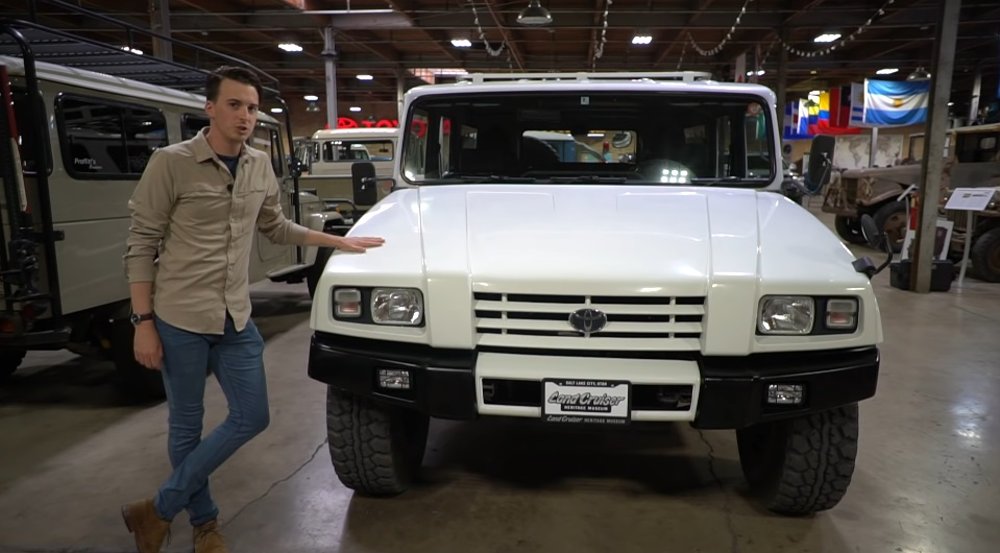
Meet the BXD20
The video above begins with host Chris O’Neill giving us a look at the many different Land Cruisers at the Utah museum, followed by a look at the star of this video; the 1996 Toyota BXD20 Mega Cruiser. He explains with a quick history lesson on the uniquely gigantic vehicle, calling it his “personal automotive Holy Grail”. He explains that the Mega Cruiser debuted at the military-use BXD10 in the 1990s, but with the booming popularity of big sport utility vehicles in Japan around that time, Toyota quickly put together a civilian version.
Named the BXD20 Mega Cruiser, it was a far more civilized version of the original, serving as the Japanese rival to the Hummer H1. It even looked like the Hummer, with a big, boxy form, a high ride and a flat hood, but the Mega Cruiser had a roofline that was a few inches taller and an overall length that was about a foot longer than the H1. As a result, the BXD20 offers more room than the H1, but it also about a thousand pounds lighter than the Hummer.
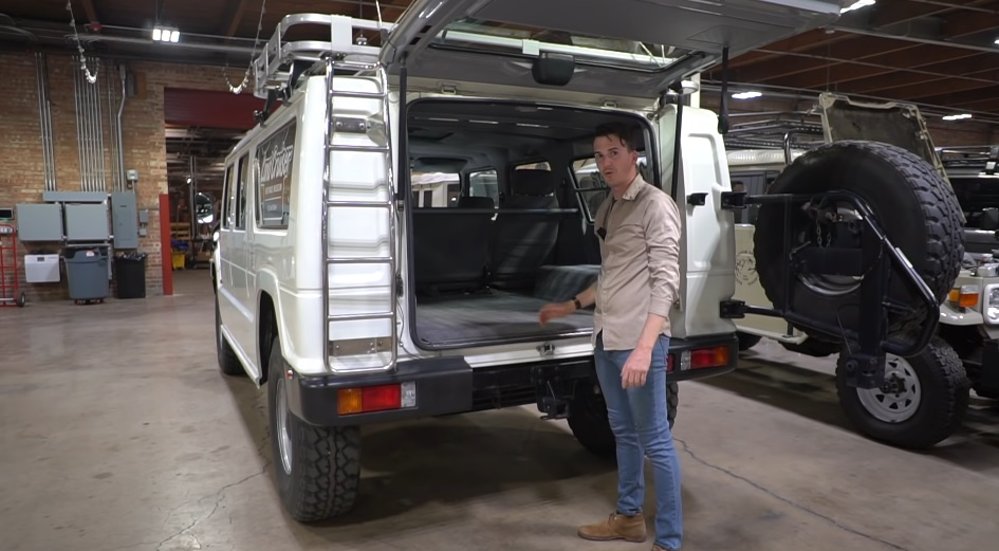
Under the hood of the 1996 Toyota BXD20 Mega Cruiser is a 4.1-liter, 4-cylinder turbocharged diesel engine that sends 153 horsepower and 282 lb-ft of torque towards all four wheels via a 4-speed automatic transmission and a heavy-duty all-wheel-drive system. As you might imagine, a vehicle of this size with such little power isn’t a quick machine, with the host calling it “a little slow” and later stating that the Mega Cruiser “isn’t really interested in acceleration” but “you can drive over anyone who is bothered by your leisurely pace”.
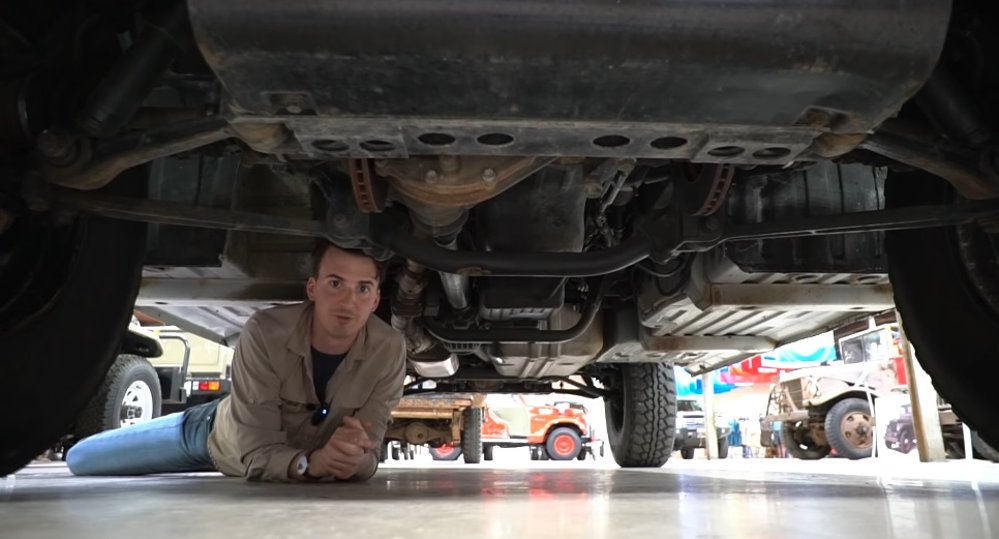
Finally, like the Hummer H1, the Mega Cruiser has inboard brakes, four-wheel independent suspension and portal axles, but unlike the Hummer or Humvee, the Toyota has four-wheel-steer that greatly enhances low speed cornering in tight quarters.
The Cabin
On the inside, the Toyota BXD20 Mega Cruiser continues to look like a Hummer with controls from an 80 Series Land Cruiser. The transmission tunnel is high and obtrusive, but that doesn’t impact the rear seating area, with four individual seats spread between the rear doors.
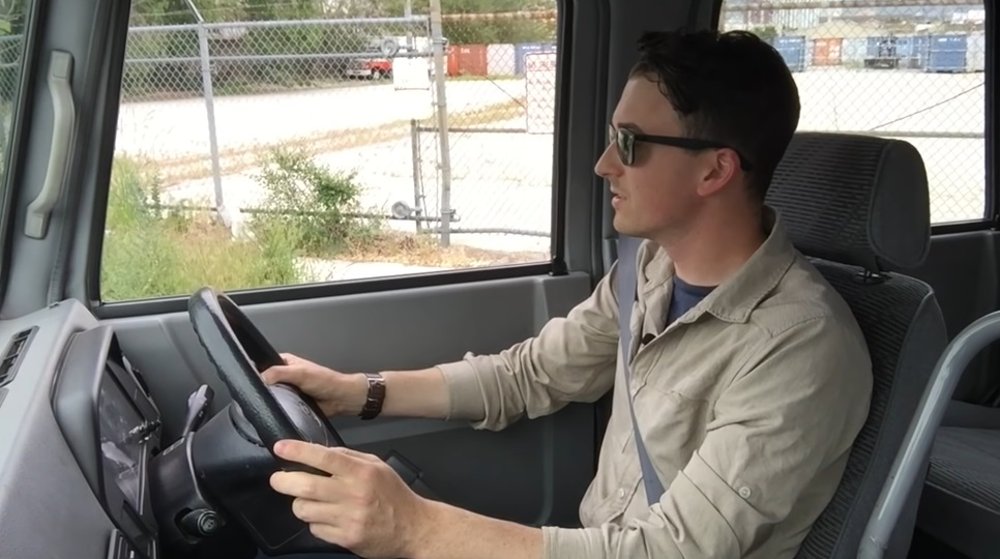
Out back, the rear hatch gives way to a massive rear cargo area, completing the layout that the host calls “bare bones”, but when you consider the military roots, the bare interior makes sense.
The Drive
After providing us with all of the information that we could want on the 1996 Toyota BXD20 Mega Cruiser, O’Neill takes it for a spin on the streets of Salt Lake City. As mentioned above, he points out that the vehicle is slow, but he also talks about the unique seating position for American driving.
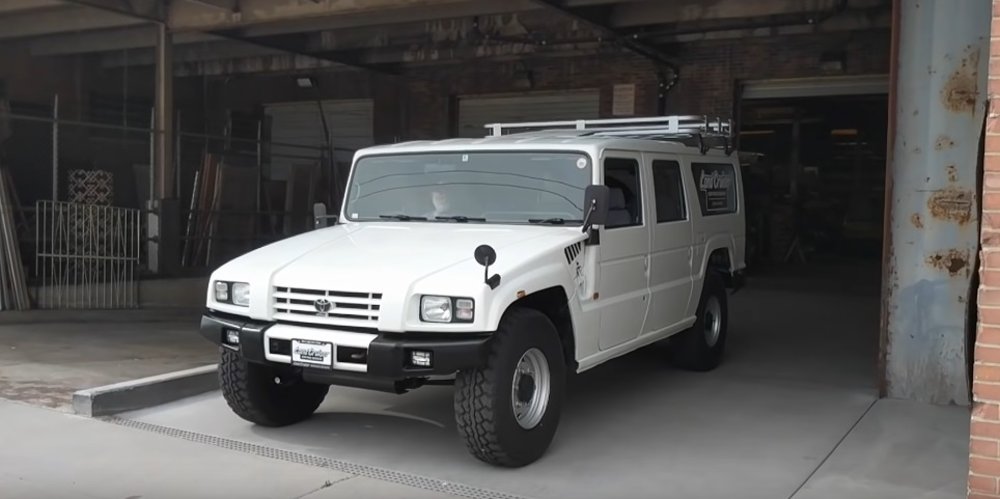
Since the BXD20 was only sold in Japan, it has a right-drive layout and with thin doors, the driver’s seat is more or less right against the outside edge of the lane. He equates it to driving while sitting on the sidewalk, but with some practice, he gets the hang of it and he learns to enjoy the drive.

In the end, O’Neill says that the “Mega Cruiser felt solid, extremely solid”, with no rattles or creaks that you would expect from a military-based vehicle.
